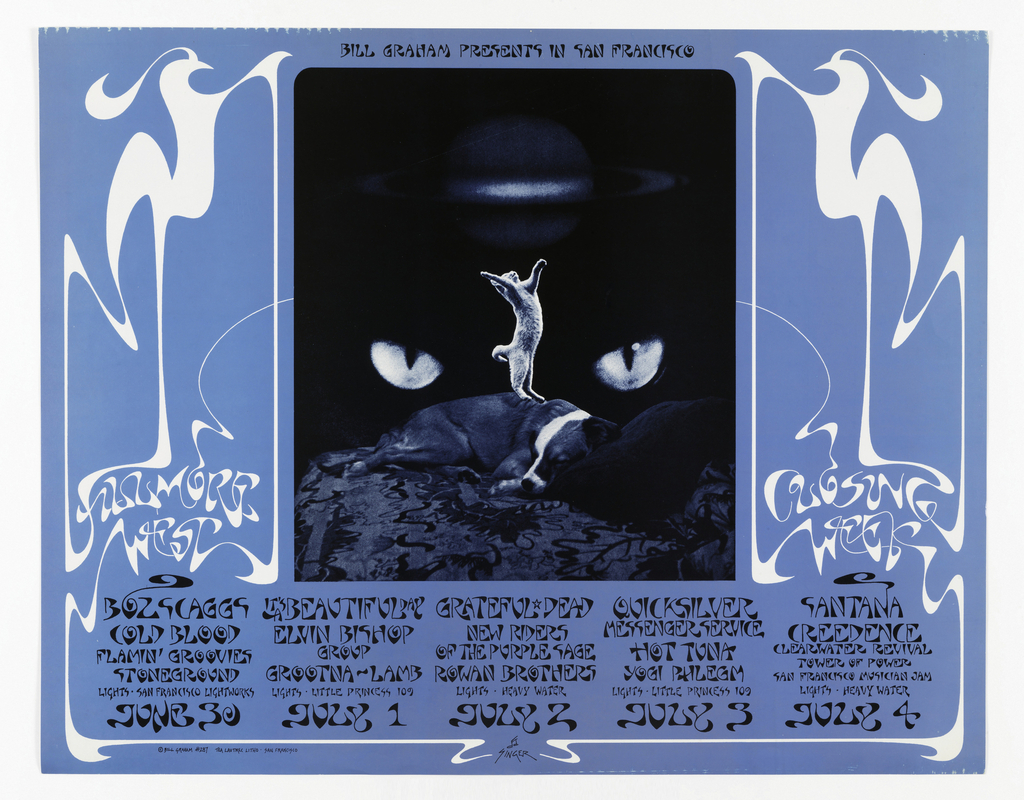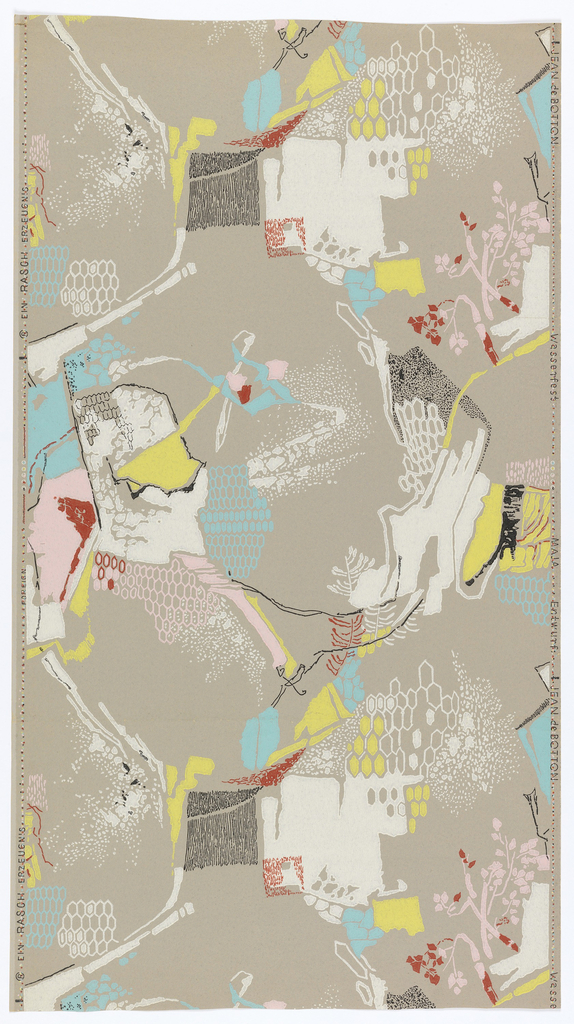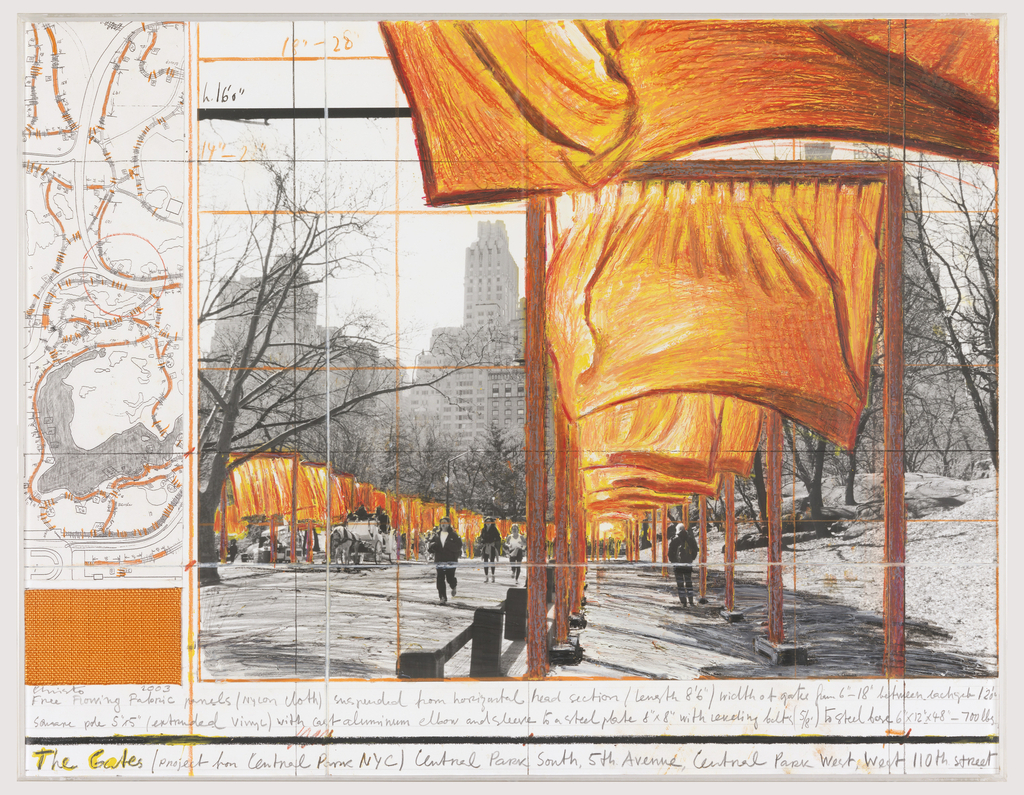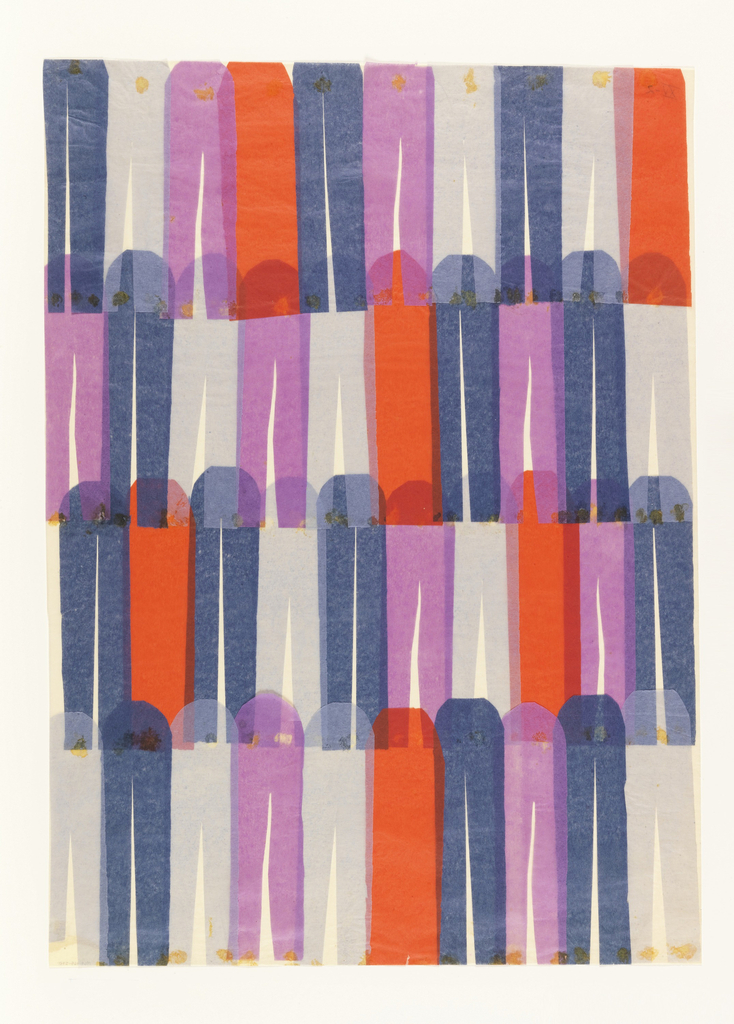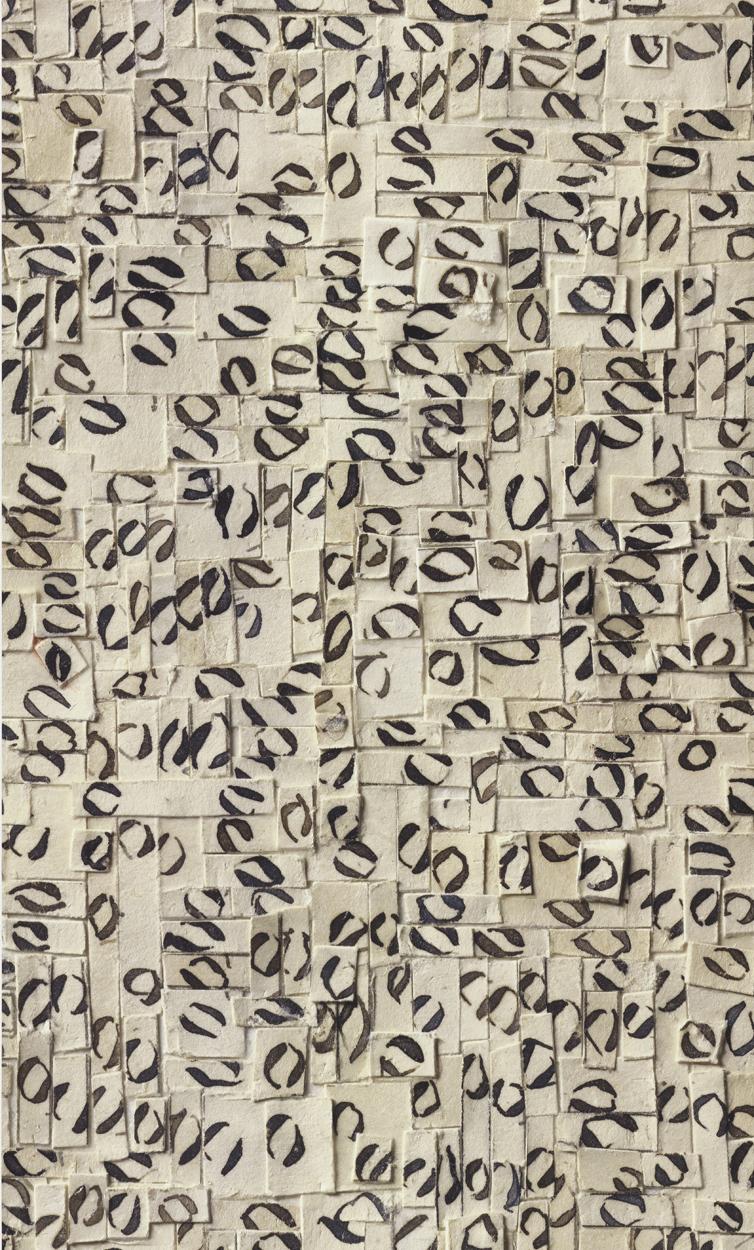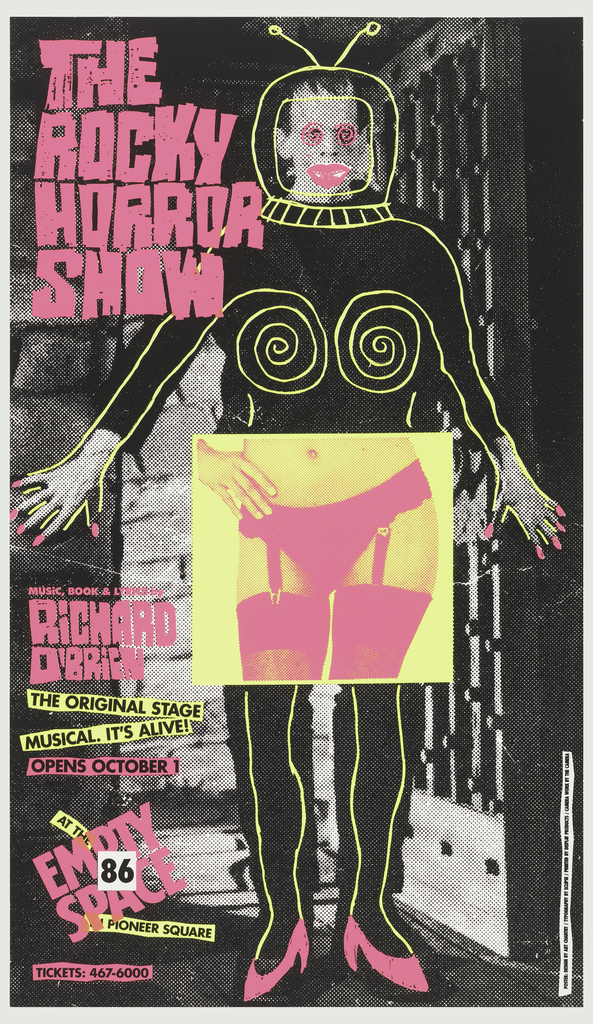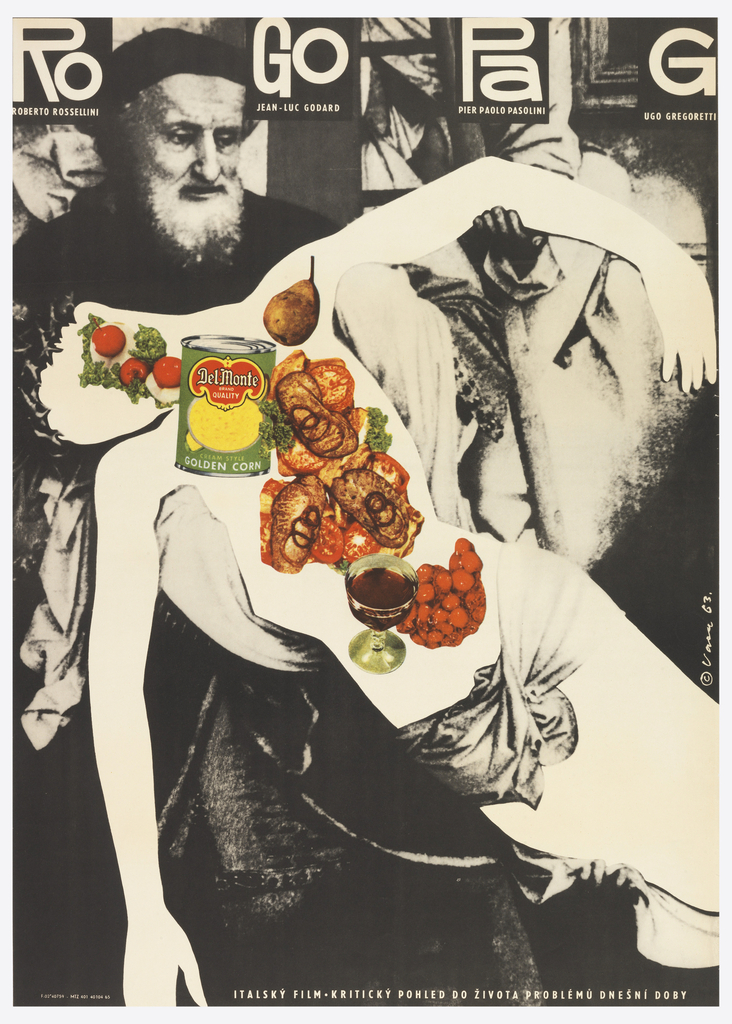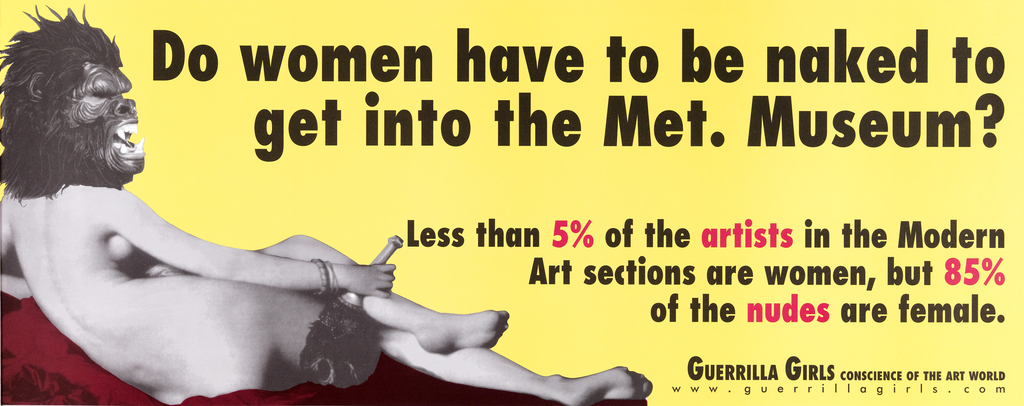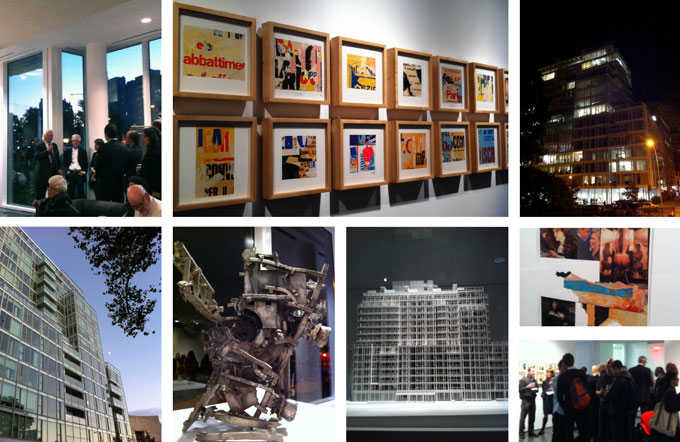As the San Francisco rock scene grew in the 1960s, posters were commissioned by the concert promoter Bill Graham for shows at popular venues such as the Fillmore Auditorium. David Singer produced more posters for Graham than any other artist, designing 75 posters from 1969 to 1990.[1] Although he had an unusual background for a...
Maja is a mid-century paper produced by a German manufacturer, designed by an American artist born in Greece but active in France and the USA. This is one of three papers in the museum collection by Jean de Botton, and while all his wallpaper designs are rather abstract this is the only one with no...
Pumpkin-orange! Motion! These are just a few words that come to mind to describe this collage by artists Christo and Jeanne-Claude. This bright, dynamic work presents a plan and rendering of The Gates, a public art installation that filled the winding walking paths of New York’s Central Park with 7,503 rectangular structures draped with flame-colored...
“Sharp, brilliant colors skillfully combined or used with neutral tones provide excitement in an extensive collection of textiles introduced by Herman Miller Company…” describes the New York Times writer Betty Pipes of Alexander Girard’s debut textile collection in 1952.[1] Girard was a European trained architect who came to prominence in Detroit, where he established an...
This 1948 jacket for William Carlos Williams’ book-length poem Paterson was designed by Alvin Lustig for New Directions Publishing’s New Classics series, a collection of reprints of modern literature. Lustig and Williams, a self-expressive graphic designer and a painterly writer, respectively, are a particularly complimentary pair, of the many authors whose work Lustig visually rendered....
REM-04 is from the Remixed collection by Dutch collage artist Arthur Slenk (b. 1941). The collection was inspired by two boxes of antique handwritten sheet music purchased by the artist. Slenk found a certain beauty in the handwritten musical scores and after studying the pages in depth he noticed certain recurring effects, such as ink...
Art Chantry’s posters from the 1980s combine simple collage techniques with low-cost printing. Chantry often cut images out of magazines and catalogs, photocopying them to create high-contrast images that he could put together into arresting illustrations. Each poster uses mass media to comment on its own idioms. According to designer Art Chantry, this poster...
Since the Dada revolution, designers and artists have chopped up glossy magazines in their search for raw materials. To create this poster for a festival of contemporary avant-garde films, the designer cut away the body of Christ from a blown-up of a Renaissance painting. The blank space where the body used to be becomes a...
Do women have to be naked to get into the Met. Museum? is a poster designed by the Guerrilla Girls – a radical feminist collective – in order to draw attention to rampant discrimination against women artists in the curatorial collections of major museums. Legendary for their guerrilla tactics, gorilla masks and take-no-prisoners attitude, the Guerrilla...
Design Watch Members enjoyed a special evening with Cooper-Hewitt trustee Richard Meier at the opening of Art in Architecture: Selected Works by Richard Meier in Brooklyn. This exhibition is hosted in Richard Meier’s own architectural project, Richard Meier on Prospect Park. Meier’s collages and sculptures complement his architecture in various, unexpected ways. In contrast to...
